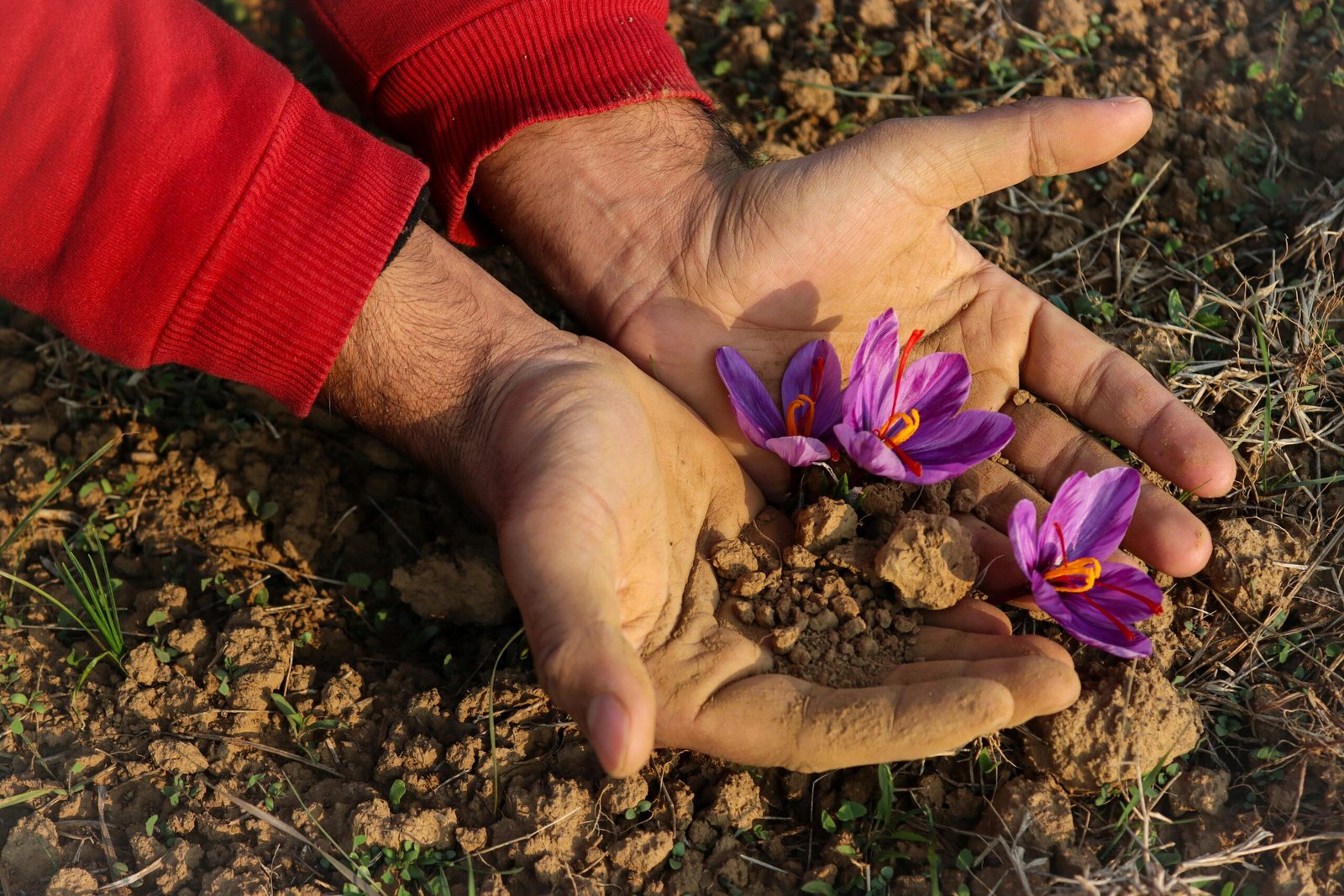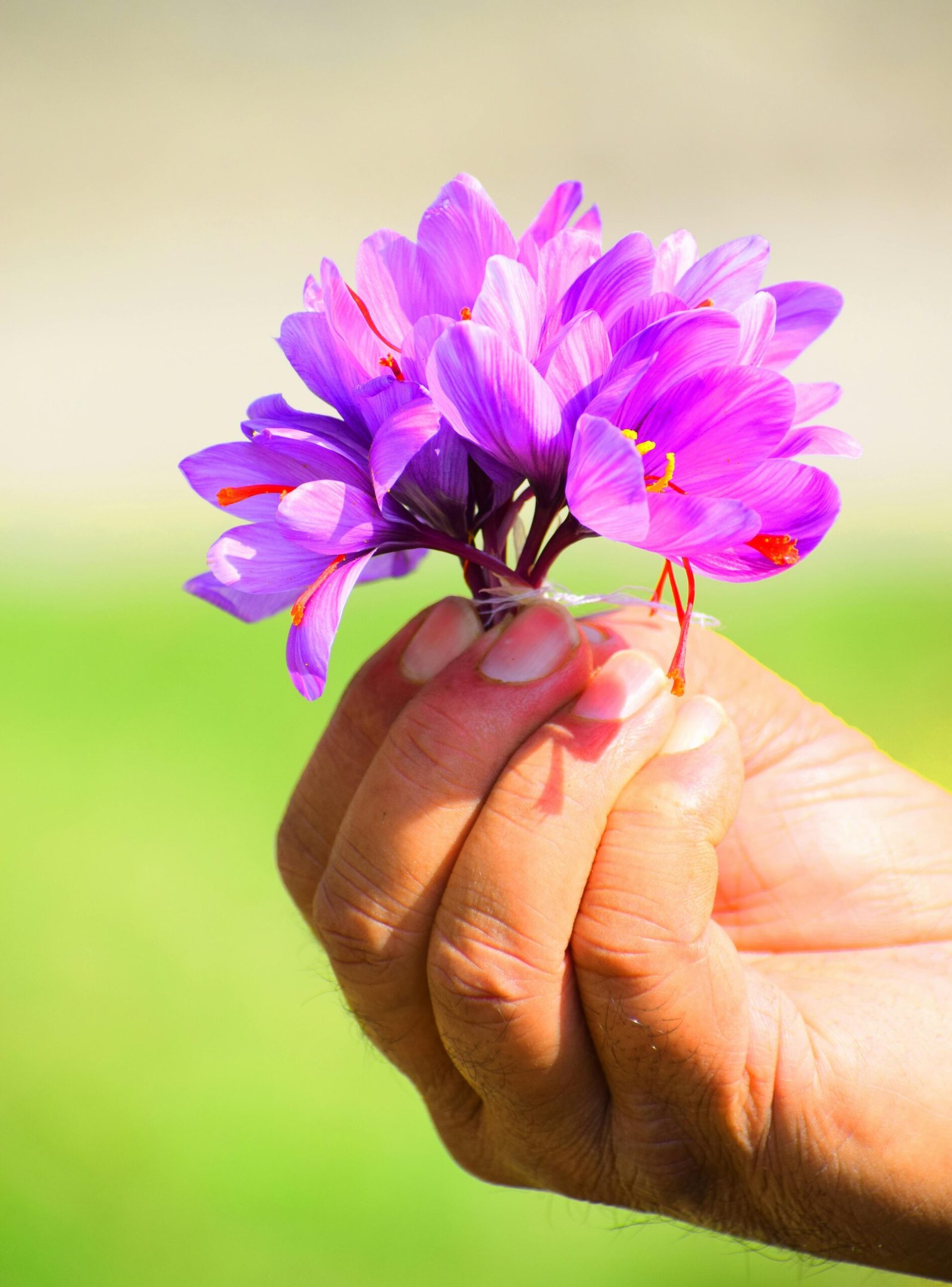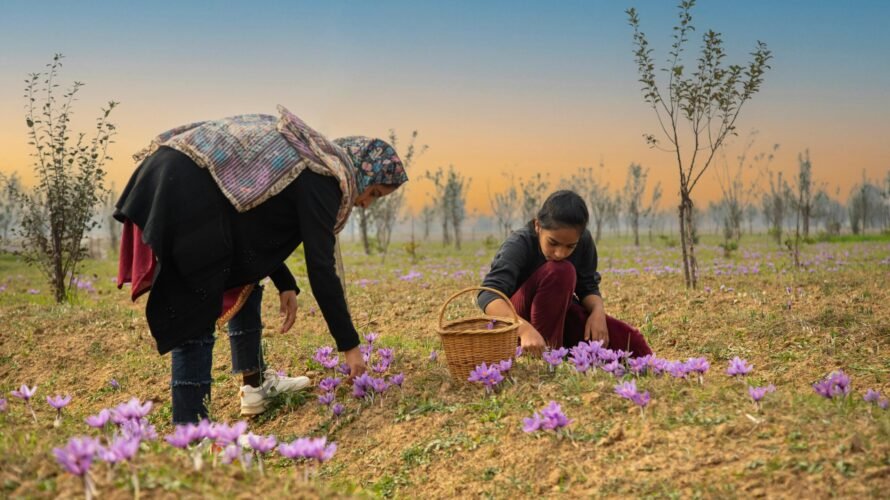Saffron Origin
What is Saffron?
Saffron is the dried stigma (female reproductive part) of the saffron flower (Crocus sativus). The flower blooms once a year in the fall, and each flower produces only three crimson-red threads, which are collected by hand during harvest. Saffron is then dried and used in cooking, traditional medicine, and cosmetics.
Saffron is known for its distinctive aroma, rich color, and slightly bitter taste. It has been used for centuries in both culinary and non-culinary applications. It is considered a versatile spice in kitchens across the world, prized for its ability to elevate dishes with just a pinch.
The Saffron Flower Origin: Tracing Its Ancient Roots
The saffron flower, scientifically known as Crocus sativus, is the source of this precious spice. The history of saffron dates back over 3,000 years, with evidence pointing to its first cultivation in the ancient region of Persia (modern-day Iran). However, saffron’s cultivation spread to other regions of the Mediterranean, including Spain, Morocco, and India, and each country’s saffron has unique qualities that set it apart from the others.
The saffron flower origin is intertwined with the evolution of human culture, where it was used not only in cooking but also in religious rituals, textiles, and medicine. It is believed that original saffron was first cultivated in the wild landscapes of Iran, where the climate and soil conditions proved ideal for its growth. Over the centuries, the plant was domesticated and perfected, leading to the high-quality original saffron that we recognize today.
Where Did Saffron Originate?

Saffron’s exact origin remains a subject of much debate, but it is most commonly believed to have originated in the Persian Empire (modern-day Iran). It’s said that saffron was used as a medicinal and culinary tool by the ancient Persians as early as 1500 BCE. From Persia, it spread to neighboring regions like India, Greece, and Egypt, where it was integrated into the culture and culinary traditions.
The original saffron flower is native to the Mediterranean, and while it has been cultivated in several countries, Iranian saffron (or Persian saffron) remains the most prestigious and widely known. That being said, Moroccan saffron and Spanish saffron have also garnered considerable fame, thanks to their unique growing conditions and flavors.
Different Varieties of Saffron
- Iranian Saffron (Persian Saffron): Iran produces approximately 90% of the world’s saffron. Iranian saffron is known for its deep, red color and potent flavor. The climate and altitude of Iran’s saffron-growing regions, particularly in Khorasan, provide an ideal environment for growing saffron, contributing to the high quality and abundant harvests of the spice.
- Moroccan Saffron: Grown in the Atlas Mountains of Morocco, Moroccan saffron has a unique fragrance and flavor profile. The production of Moroccan saffron is more limited compared to other regions, making it rarer and often more expensive. The intense sunshine and dry climate of Morocco contribute to the distinct taste and aroma of the saffron produced there.
- Spanish Saffron (Saffron Espanol): Spain is one of the oldest producers of saffron, with its Castilla-La Mancha region being the most well-known. The growing conditions in Spain yield a saffron that has a slightly more bitter flavor than other varieties, with a bright yellow color when added to liquids. Spanish saffron is often considered the gold standard in Mediterranean and European cuisine.
How to Check if Saffron is Original?

As the demand for saffron has grown globally, so has the presence of counterfeit and lower-quality saffron in the market. Whether you’re purchasing original kesar, original saffron, or original zafran, it is essential to know how to differentiate between real and fake saffron. Here are some tips for checking whether your saffron is genuine:
- Visual Inspection: Real saffron threads are long, thin, and deep red. They have a somewhat thread-like appearance with a slightly yellow tip. If the saffron you purchase is too orange or yellow, it may not be authentic. Genuine saffron should not be brittle or overly dried out, and it should retain a bit of moisture, especially if stored in the right conditions.
- Smell Test: Original saffron has a distinct, sweet, and earthy aroma. If the saffron has little to no fragrance or smells artificial, it is likely counterfeit. The more potent the scent, the higher the quality of the saffron.
- Color Test: Genuine saffron will release a rich, golden-yellow color when added to warm water. Fake saffron will either not release any color or will turn the water an unnatural, pale hue. The more vibrant and deep the yellow hue in the water, the more authentic the saffron.
- Taste Test: Saffron has a unique, slightly bitter taste with a subtle earthy flavor. Genuine saffron may initially taste a bit metallic or bitter, while fake saffron will have a bland or artificial flavor.
- Price Check: Genuine saffron is one of the most expensive spices in the world. If the price of saffron is too good to be true, it likely is. Authentic saffron requires thousands of delicate flowers to produce just a small amount of spice, making it a labor-intensive and costly product.
How to Check Original Saffron?
To confirm the authenticity of saffron, there are some practical steps you can take:
- Use a Saffron Thread Test: Take a few strands of saffron and crush them in between your fingers. Original saffron will stain your fingers a rich red or orange color, whereas fake saffron may not leave any trace.
- Soak Test: Soak the saffron threads in warm water or milk. Genuine saffron will color the liquid in a brilliant golden-yellow, while fake saffron will not alter the liquid much or may create a faint, unnatural tint.
- Examine the Packaging: Always buy saffron from reputable sources or brands that provide proper labeling and certification. Packaging that is transparent, indicating the saffron’s country of origin, and offering detailed product information is often a good sign of authenticity.
What is Saffron Spice Used For?
Saffron is used in a wide range of culinary applications. It is known for its ability to infuse color, flavor, and fragrance into foods, and it is used in:
- Rice dishes: Saffron rice is a classic staple in many cuisines, from Persian polo to Indian biryani, and Mediterranean paella.
- Meats and Stews: It pairs perfectly with lamb, chicken, and seafood. Moroccan saffron is often used in tagines, while Spanish saffron finds its way into rich, savory stews.
- Desserts: Saffron is used in sweet dishes like ice creams, puddings, cakes, and pastries. The spice imparts a luxurious flavor and vibrant yellow color to desserts.
- Teas and Beverages: In some cultures, saffron is steeped in hot water to create aromatic teas, which are believed to offer relaxation and digestive benefits.
What is Saffron Good For?
Saffron is widely regarded for its health benefits, making it much more than just a spice for cooking:
-
- Mood Enhancer: Saffron is known to have mood-boosting properties, often used to alleviate symptoms of anxiety, stress, and mild depression. Studies have shown that saffron may have antidepressant effects.
- Antioxidant-Rich: Saffron contains antioxidants like crocin and safranal, which help combat oxidative stress and inflammation in the body.
- Digestive Health: Saffron has been used in traditional medicine to promote digestion, soothe the stomach, and treat indigestion or bloating.
- Skin Benefits: Due to its anti-inflammatory and antioxidant properties, saffron is used in skincare products for brightening the skin, reducing pigmentation, and promoting a healthy glow.
What Color is Saffron?
The color of original saffron is deep red, with a slightly orange or yellow tint at the tips of the threads. The deep red color is one of the key indicators of high-quality saffron, as the pigment crocin is responsible for its rich hue.
Conclusion: The Essence of Original Saffron
Understanding the saffron origin and its journey from the flower to the kitchen is key to appreciating the depth and richness of this extraordinary spice. Whether it’s original kesar, original zafran, or Moroccan saffron, the quality and authenticity of saffron are paramount to enjoying its full range of benefits. The growing regions, such as Iranian saffron, Spanish saffron, and Moroccan saffron, all bring their unique touch to the world of saffron, each variety offering its own distinct flavor and aroma.
By being aware of how to identify original saffron and original saffron flower, you can ensure that you are purchasing a genuine product that will elevate your culinary creations and provide all the health benefits that saffron has to offer. Whether you use it for cooking, beauty, or wellness, saffron remains one of the most precious and versatile ingredients in the world.





